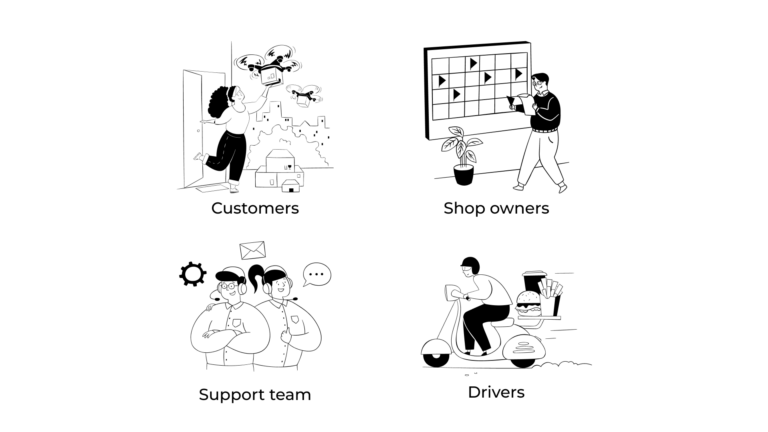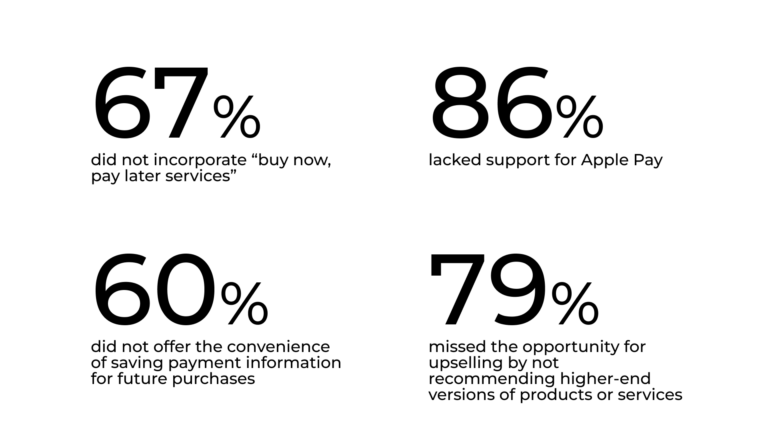Our client, a leading marketplace in the Arab region, has recently experienced remarkable growth, evolving from a startup to become one of the top 5 apps. They provide a comprehensive platform offering food delivery and courier services, serving millions of users.
We provided them with a robust, scalable infrastructure needed to support their growth trajectory and enhance their service offerings.
But let’s rewind 9 years back when we were just starting working together.
The client had an awesome idea – a mobile delivery/courier platform, providing merchants and customers with a solution for on-demand, local courier services while filling up the idle time of existing or self-employed couriers.
What they didn’t have was the team to do that. They needed an implementation partner, and Setronica was up for the job, providing the client with a cross-platform solution, including backend, frontend, API, and infrastructure.
The breadth of experience allows us to bring cross-sector insights to every project, ensuring our solutions are not just technically sound, but also strategically aligned with industry best practices.
As a potentially fast-growing company in a tough market, the client faced a perfect storm of problems that could slow down their growth and hurt their place in the market.
You don’t start making an app or a platform without thinking about scalability potential first. If the app is successful, more people start using it, pushing the system to the limits. During busy times, the system will struggle with too many orders at once, risking slowdowns and possible crashes.
However, we faced a scenario, where rapid launch was prioritized over proper optimization. We later addressed this by transforming a monolithic service into a microservices architecture. This strategic move was crucial for creating the flexibility and scalability needed to support our expanding user base.
A delivery business must adhere to strict government regulations, that may change across countries. Moreover, these regulations have been emerging, expanding, and changing over the past five years.
A proper solution would require the app to connect with many government systems to follow the rules. Without proper connections, the company might break local laws, especially about taxes and transportation rules.
Over these 9+ years, we’ve become highly proficient in navigating these laws. We’ve come to recognize that new regulations from governing bodies are not just a source of limitations, but also a wellspring of fresh opportunities. Our ability to swiftly adapt our system to evolving requirements has become a key strength.
The platform was supposed to work for four main groups:

Each group needed specific features, creating a complex system of user types and permissions that needed careful handling and improvement.
In a business where new ideas come fast and what customers want changes quickly, being able to create and launch new features quickly became very important. The client needed a solution to do just that, to strengthen the edge over competitors.
This challenge aligns closely with a core startup principle: the concept of rapid prototyping and iterative development. Waiting for perfect solutions can mean missing critical market opportunities. Instead, successful companies adopt a “test first, refine later” approach.
Speaking of the market demands – before even getting to the project scope, we completed a research to find the competitive edge of the app. As a result, our project could stand out with its unique set of ecommerce features, distinguishing it from 99% of North American ecommerce platforms surveyed by Stripe.
Out of all the platforms we examined:

That meant we needed to prioritize the convenience of saving payment information for future purchases, integration of “buy now, pay later services”, and support for Apple Pay. Also, our project should effectively use upselling strategies, enhancing customer experience and driving revenue growth.
Setronica provided comprehensive backend and frontend solutions to address these requirements.
We developed a highly scalable backend system using Java, Spring Boot, RabbitMQ, Kafka, PostgreSQL, and Redis, designed to handle millions of daily transactions without compromising on speed or reliability.
The system ensures seamless interaction with the merchant and product catalog, facilitates user authorization, enables efficient search functionality, and supports driver operations including route planning. Additionally, it handles payment processing, technical support, and integrates with third-party merchants to enhance service offerings.
To ensure compliance and enhance functionality, Setronica integrated the system with various government entities such as the Ministry of Internal Affairs and Tax Authorities. These integrations are crucial for maintaining regulatory compliance and streamlining operations.
Setronica also developed the backend and frontend of the administrative system used by the client to manage and configure merchant and product catalogs, users, and drivers. This system includes a support operator’s workstation for handling orders, drivers, and users, managing transactions, and setting up promotional campaigns.
One of our key achievements in this area was the implementation of an optimized catalog structure. It facilitated rapid integration with promotional blocks on Facebook and Instagram. By streamlining this process, we significantly enhanced our client’s ability to market their products effectively across multiple digital channels.
However, the structure of the product and options was so customized that it prevented the system from integrating with off-the-shelf ERP systems.
The classic product tree model (Model – Color – Size – Variations) proved inadequate for our client’s diverse offerings. Our system needed to accommodate scenarios where, say, a pizza could be any size and include multiple, potentially repeated, toppings (after all, who hasn’t craved an extra layer of cheese?).
To learn how Setronica dealt with the complex catalog structure, read this: Merchant Integration Methods for Complex Catalog Structures.
Also, Setronica provided the backend and frontend for merchant and cashier workstations, including a version optimized for tablets. These workstations enable merchants to manage orders and products, configure POS settings, manage schedules, and control user access. This flexibility ensures that merchants can operate efficiently and adapt to changing business needs.
To support the rapidly growing user base, we implemented Docker, Kubernetes, and AWS for infrastructure orchestration. This enabled automatic scaling during peak loads and provided cost-effective resource management during off-peak periods. A continuous integration/continuous deployment (CI/CD) pipeline was set up using Jenkins to accelerate updates and reduce downtime.
We started with Scrum, which served us well in the early stages of the project. However, as the business grew rapidly, we found ourselves needing a more flexible approach to respond swiftly to changing market demands and client needs.
Next, we adopted Kanban (STATIK) practices to improve efficiency. By making managerial decisions based on collected Kanban metrics, we managed to reduce the client’s time-to-market by 50%, from the initial concept phase to user delivery. This allowed for quicker feature rollouts, faster bug fixes, and enhanced customer satisfaction.
As the project evolved further, we faced a new challenge: the diversification of our product into distinct verticals. Each vertical had its unique requirements and pace of development. In response to this, we made a strategic decision to reintroduce Scrum methodologies, but this time on a per-vertical basis.
The whole infrastructure was built using a comprehensive set of technologies:

When the process was up and running, we started helping the client onboard new in-house developers.
That doesn’t mean we stepped away from the project. We are still involved, as new requirements appear. But the process is more or less the same:
🤝 Knowledge & people
As a result, the client has an experienced in-house team, plus outsource experts. The level of collaboration is high, we keep the knowledge within the project.
💻 Java backend
We successfully process a substantial volume of completed orders and payments every day, with impressive numbers that are protected by non-disclosure agreements (NDAs).
📈 Annual order volume growth of 100%
By building a system capable of handling millions of requests, the client doubles its order volume every year without experiencing downtime or performance bottlenecks.
📉 Reduced time-to-market by 50%
The adoption of Kanban and agile practices reduced the time required to bring new features to market, enabling the client to respond swiftly to customer needs and market trends.
💪 Increased system reliability
The platform’s fault-tolerant architecture ensured 99.9% uptime, even during peak traffic periods and external system outages. The use of AWS and Kubernetes enabled smooth scaling, allowing the system to accommodate sudden spikes in traffic seamlessly.
🏆 Successful integration with over 15 external platforms
We implemented seamless integrations with more than 15 external systems, including government databases and merchant POS systems, ensuring uninterrupted data flow and reliable system operations.
💸 Cost efficiency through process optimization
Regular review of requirements, combined with an emphasis on developing minimum viable products (MVPs), reduced the scope of certain tasks from three months to two weeks, saving both time and development costs.
Are you in search of a similar solution? Contact Setronica to discuss your project!